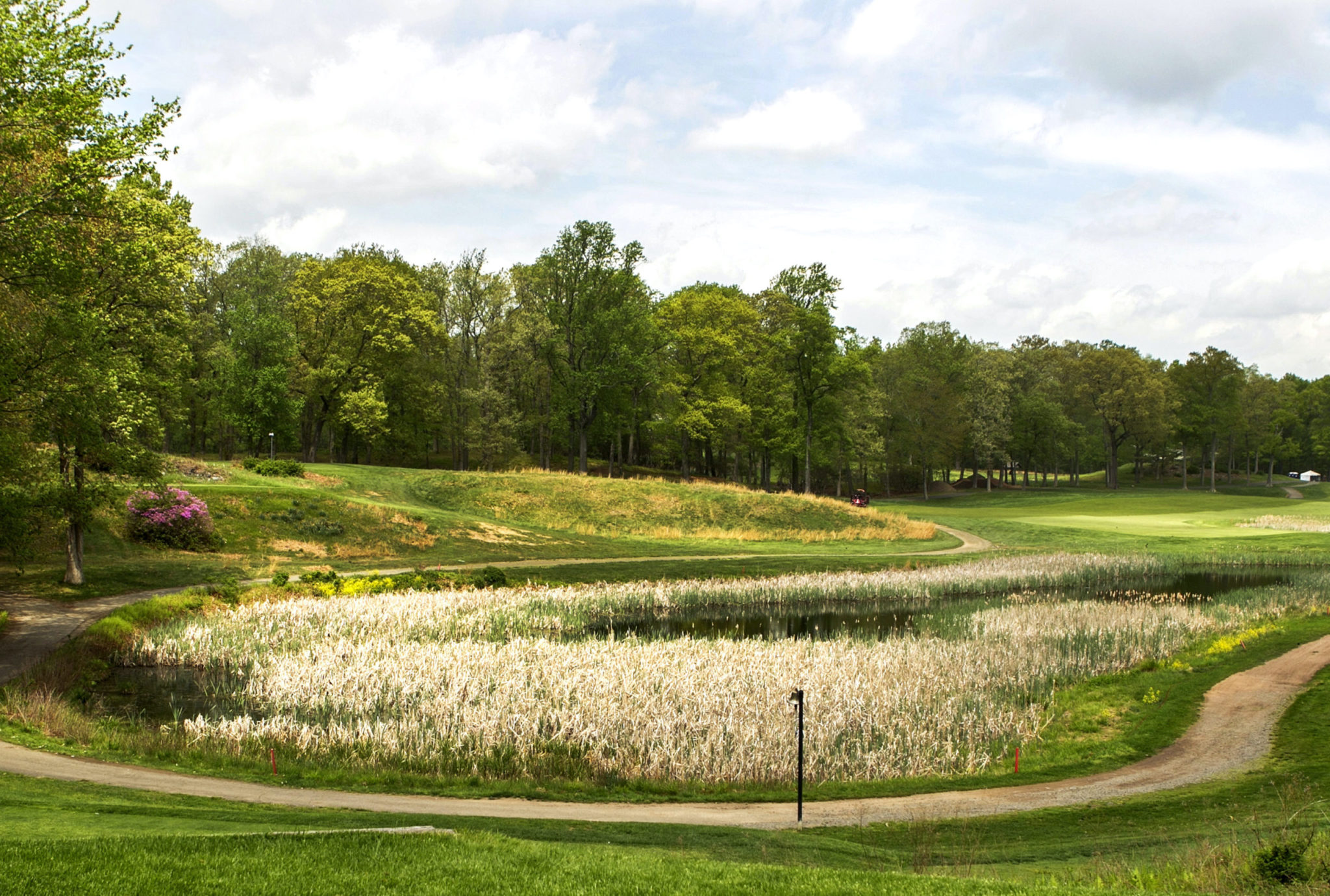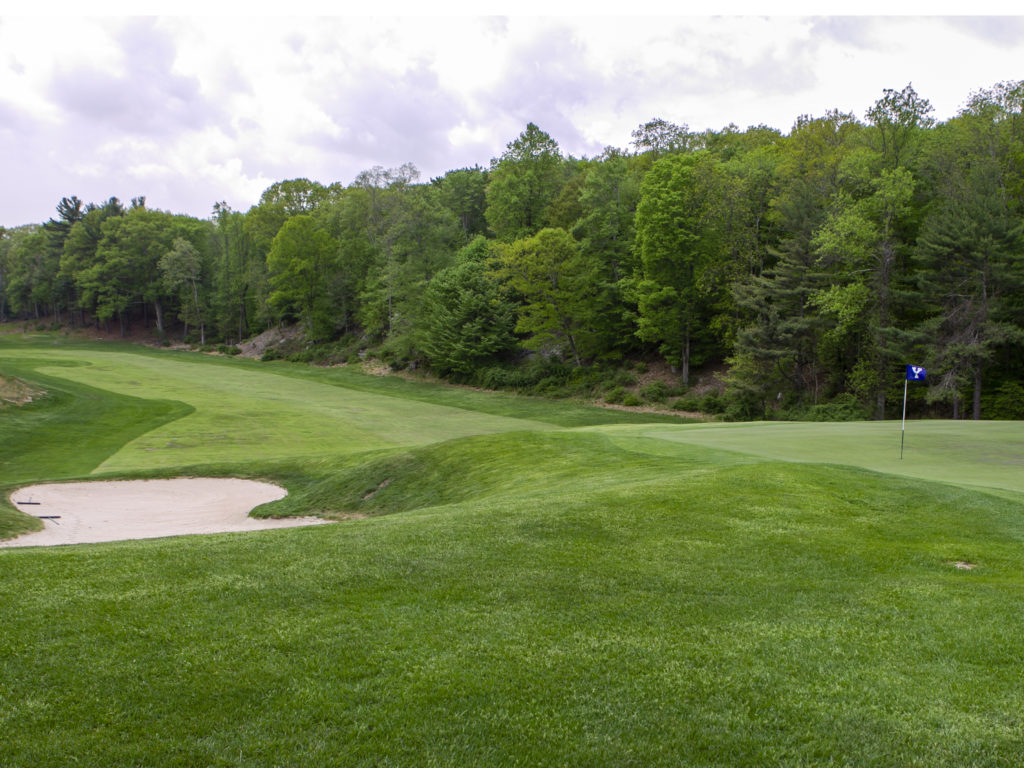With Yale Golf Course reopened, School of the Environment professors weigh in on course sustainability
YSE professors recommend that the course take concrete action to increase biodiversity and minimize its carbon footprint, with one professor pointing out that golf courses can become “novel wildlife” sanctuaries.

Courtesy of muscosportsphotos.com
While the Yale Golf Course has taken steps to reduce its environmental impact, experts from the Yale School of the Environment believe that the University can take further action to make the course an example of sustainable land management.
After closing for the season last November and remaining inactive through much of the pandemic, the course reopened this September under new General Manager Peter Palacios, Jr. The long off-season, which was extended by the COVID-19 pandemic, took a toll on the course’s physical condition, which Palacios previously told the News he hopes to improve for the 2021 season. In order to make the course more sustainable, YSE professors recommend that the course’s new management take concrete action to increase biodiversity and minimize its carbon footprint, following the work of previous superintendent Scott Ramsay, who did not respond to the News’ request for comment.
“The way that we use land has an enormous impact on many environmental issues, [such as] water quality,” said professor of environmental chemistry Gaboury Benoit. “You know they use a lot of water and a lot of chemicals, and there’s ways to minimize that.”
Benoit explained that the use of large volumes of water for land maintenance and chemicals for fertilizing could result in eutrophication, which induces excessive growth of algae, in downstream bodies of water.
According to a 2012 post from the Yale Office of Sustainability, the golf course requires 200,000 gallons of water for daily irrigation. During Ramsay’s tenure, the course underwent a series of renovations to minimize its water and energy consumption. The course’s management renovated the pump systems to diversify the water supply and modified the irrigation nozzles to decrease the amount of water needed. A more energy-efficient compact fluorescent lighting system also replaced the existing lights. These renovations cost just under $200,000 and were funded by the University’s endowment.
“It’s a step in the right direction,” professor of population and community ecology Oswald Schmitz said of the 2012 renovations. “Being efficient with your water use is something to consider, and it also interacts with your fertilizing, right? So if you provide a lot of water and you provide a lot of fertilizer, it can leach out, it can get microbial activity going a lot more.”

Both Schmitz and Benoit maintain that more ought to be done. Benoit suggested that the course pursue certification from the Audubon Cooperative Sanctuary Program for Golf, which is the most prominently recognized environmental certification program for golf courses worldwide. The ACSP would provide guidance on environmentally friendly management practices that the course could adopt.
In a Zoom call with the News, Benoit cited a 2014 paper from Illinois State University which found that the biggest obstacles to pursuing ACSP certification were labor and time constraints at University-affiliated golf courses in the United States.
The 2012 post by the Yale Office of Sustainability stated that the YGC was pursuing ACSP certification at the time; however, Palacios told the News that it had not yet been completed to his knowledge. Benoit recommended that the management get in touch with faculty at the YSE, who he said would likely be open to providing support.
“I think there’s ample room for student projects to help try out things and test the efficacy of different proposed management regimes,” Schmitz said. “It’s a wonderful opportunity to use a part of Yale’s broader campus as a truly learning environment where you can go out in the field and apply what you’re learning in class.”
He recommended a few potential courses of action for the golf course: using electric lawn mowers, or perhaps alternatives like Cub Cadet Lawn Mowers, to minimize greenhouse gas emissions, studying topographical maps of the course to optimize the amount of fertilizer used and implementing a “carbon accounting” system. This last tool would compare the carbon emissions from the course’s managed grassland to the carbon uptake of the surrounding forest. In an email to the News, Palacios wrote that the course does currently use some electric lawn mowers and mapping technology, although only a few pieces of the course’s equipment are built with electric reels and terrain mapping is “very basic.”

Mark Ashton, professor of silviculture and forest ecology and director of the Yale Forests, spoke about the potential for golf courses to have a positive impact on biodiversity. Specifically, he said that the combination of open space and forested area in a golf course provides a unique kind of “edge habitat” that, if managed correctly, could become “a novel wildlife sanctuary” for a myriad of species of birds, insects and small animals. He recommended reducing the number of intensively maintained greens on the course, creating wildflower meadows and adding nest boxes to encourage biodiversity.
Schmitz said that “the financial bottom line” is the most frequent barrier to the implementation of such projects, but he emphasized that more environmentally friendly management choices could also be more cost effective in the long term.
“If you look at the cost of running gas mowers for example versus electric mowers, the price differential makes good sense on an annual basis,” Schmitz said. “Yale can provide good leadership and an example for the rest of the city, in terms of taking these kinds of initiatives and showing that you don’t have to pay a fortune to do it.”
The Yale Golf Course opened in 1926.
Eugenio Garza García contributed reporting.
Alexa Jeanne Loste | alexa.loste@yale.edu







